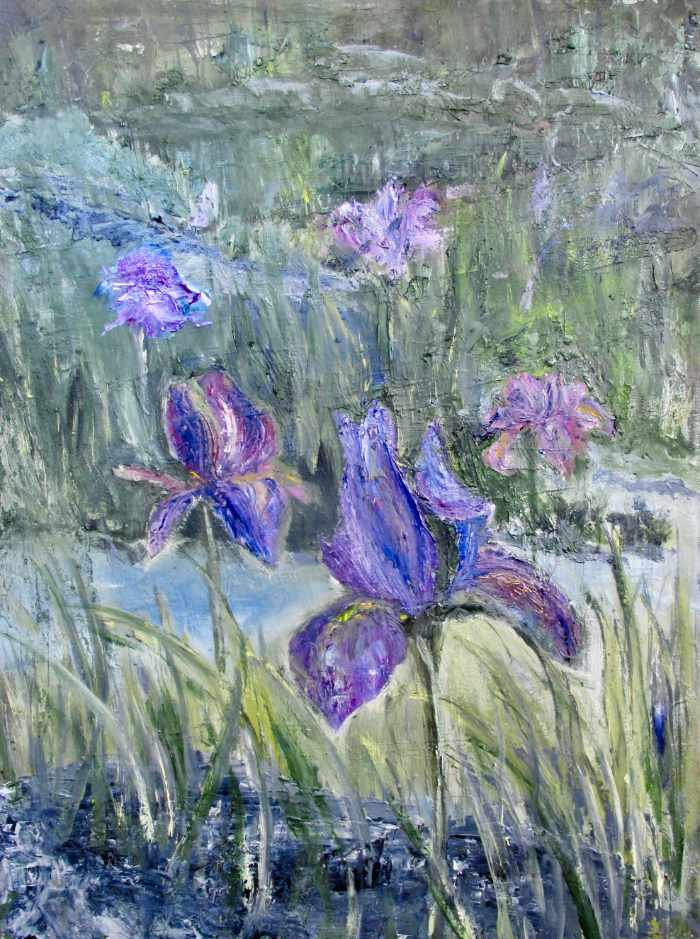The “Color” of Humanity

Currently in Italy giving our twice-a-year Studio Italia painting workshop. Everyone is painting hard and… playing hard. I am always fascinated by the seriousness of each participant. However, the subject of this post is the color “gray” or “grey” — le gris in French. During our last online painting class, Tamia from Minnesota raised the question about the importance of gray, the reason I am writing this brief post on the question with a philosophical approach. By the way, Tamia just attended our recent painting workshop in Provence.
First, knowing that gray is achromatic (a non-color), it can be achieved by mixing a speckle of black into white… or… mixing the three primary colours and adding white at various degrees. I prefer the latter, because not only that grey yields an impression of light as we see here in Tamia’s Iris (on the right) but also an emotional effect. Tamia’s flowers are permeated with a “human gray” (where hints of colours can be seen) and the painting is powerful.
Grey is powerful just as Jasper John’s painting above entitled White Flag (MoMA). There’s so much written about gray, and so many quotes about this non-color, which proves that, indeed, it shouldn’t be underestimated. Gray is the interval between two poles; it’s the many harmonies between night and day… and of the self. Let’s say straight away that gray plays an intermediary role between white and black, a transitional function between light and dark, where all human relationships and emotions are also played out. So, if painting is self-expression, why not use gray more in painting?
But gray gets some bad press: hair that loses its color, the funereal gray of ashes, “the enemy of all painting” wrote Delacroix in his Journal, ” police gray, the gray of embarrassment” wrote Gilbert Lascault in Peindre. For Goethe, grey is anti-life, gloom, spleen… For Klee, in his Theory of Modern Art, it’s a reflection of chaos… and so on. But for me, gray remains positive: it’s the city, fog, introspection… Gray is all the colors, all the emotions combined, giving depth to the painted work as well as to the human work, “you”! Didn’t Ittens write in his Art of Color, that gray takes on all the other colors that surround it?
Over the past 40 years, I’ve seen students in the process of transitioning from saturated colors to grayed ones, a sign of serious questioning about painting. As a beginner, we shy away from mixing colors, and the more we progress in our creative practice, the more daring we become. That’s life! When we’re children, we only see saturated colors, and as we get older, gray takes over. Adults realize that gray is everywhere. “The color of truth is gray” wrote the French author André Gide.
Back to Italy. I could write more about gray, but the nature of a post, which must be short and sweet, prevents me from doing so. I talked about it in my book The Artist’s Way fo Cooking (p.78-9). In short, I’m becoming more and more of a proponent of gray, which is why I’m pushing it more during our art workshops in 2023 and in 2024.
Tamia now paints in gray; she’s become a philosopher!


0 Comments